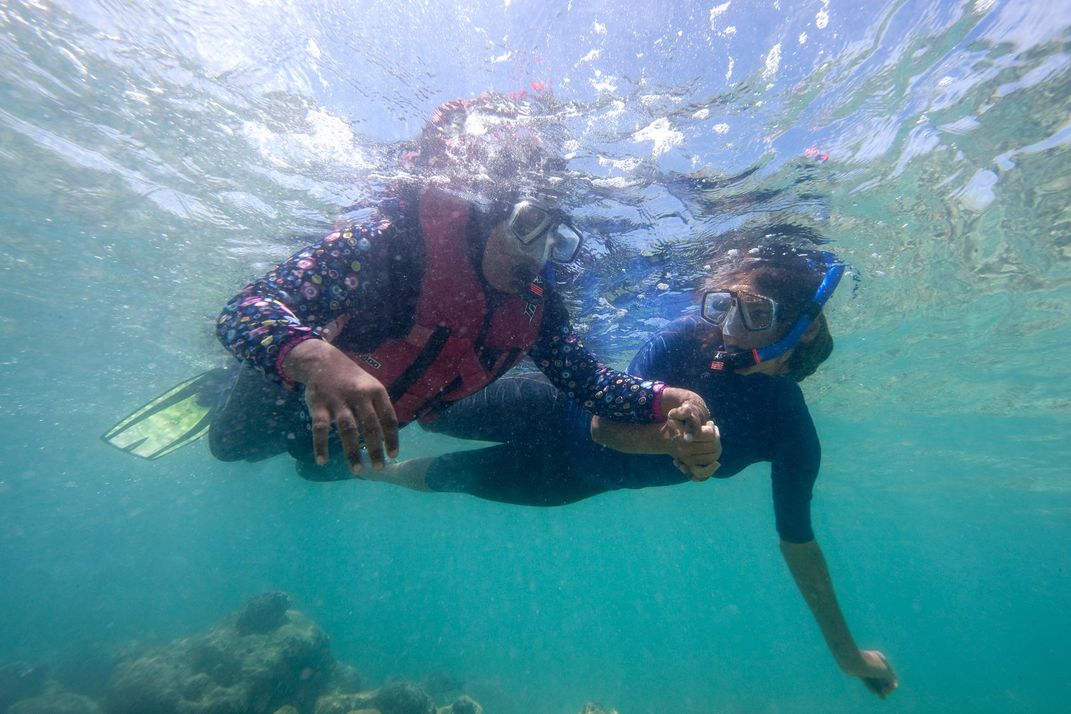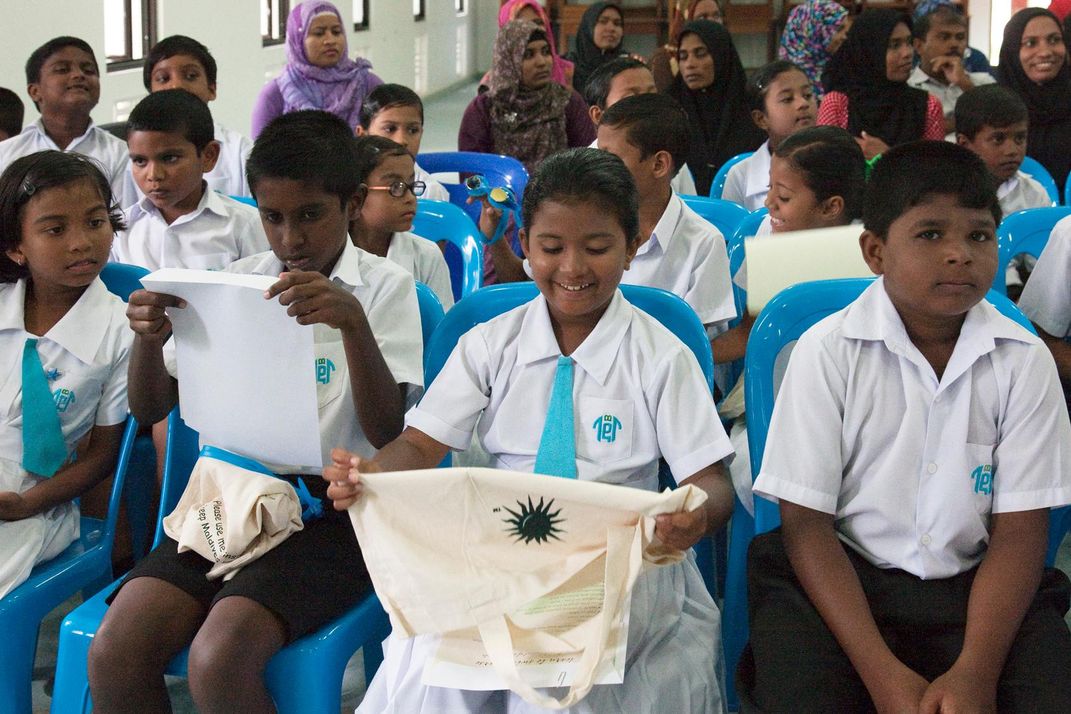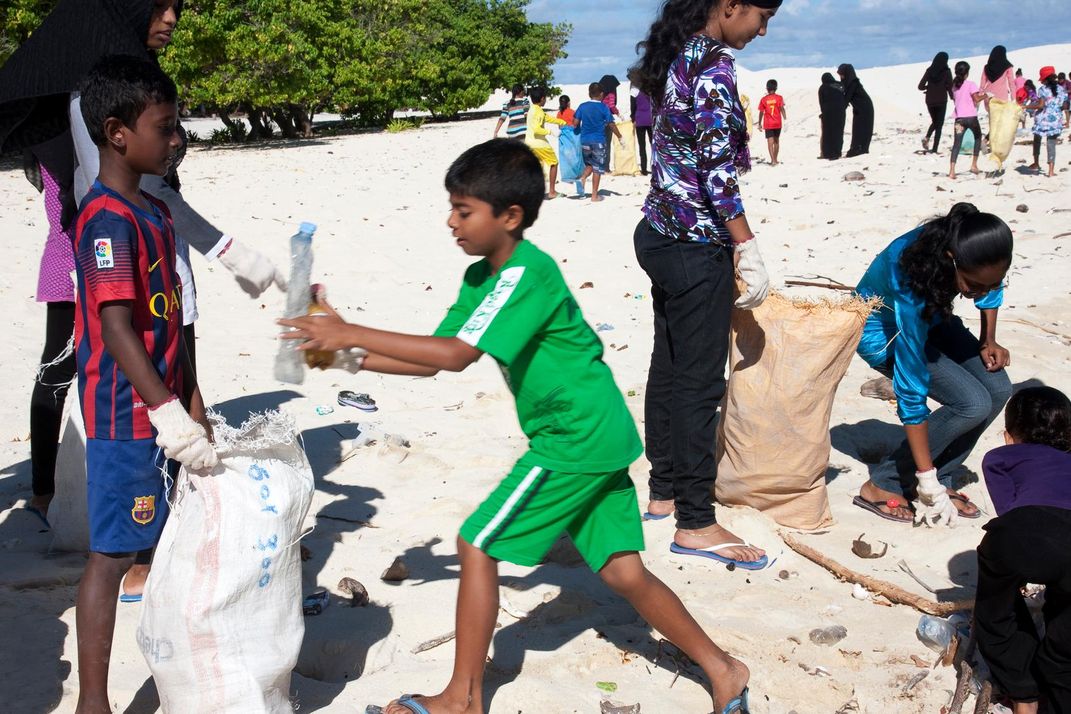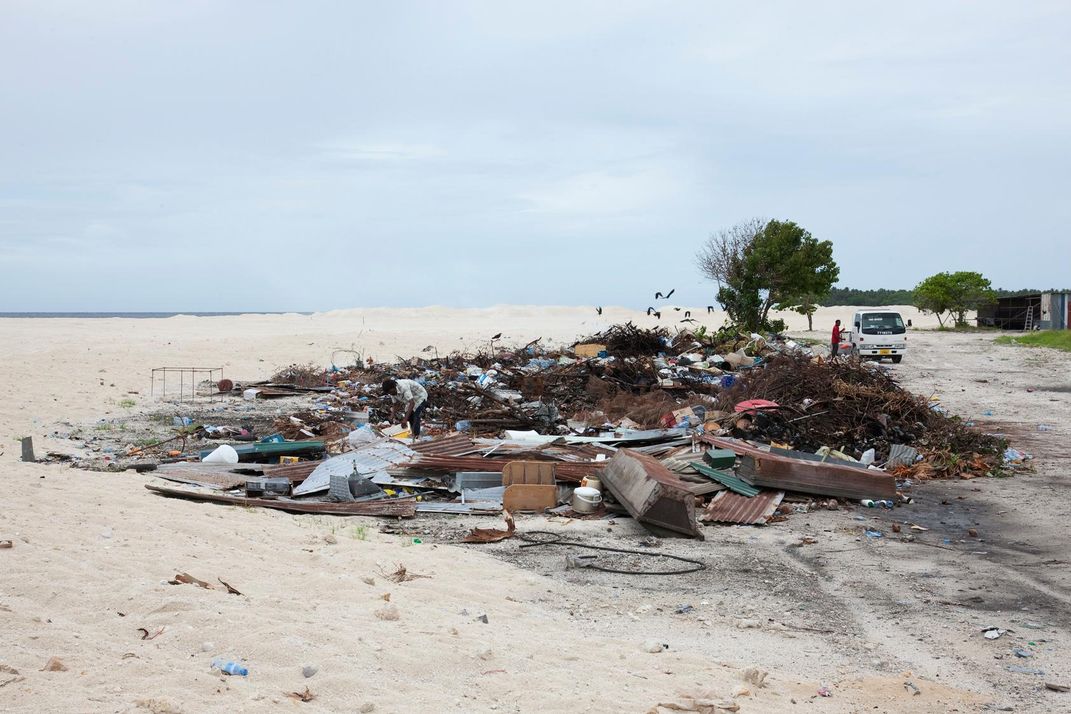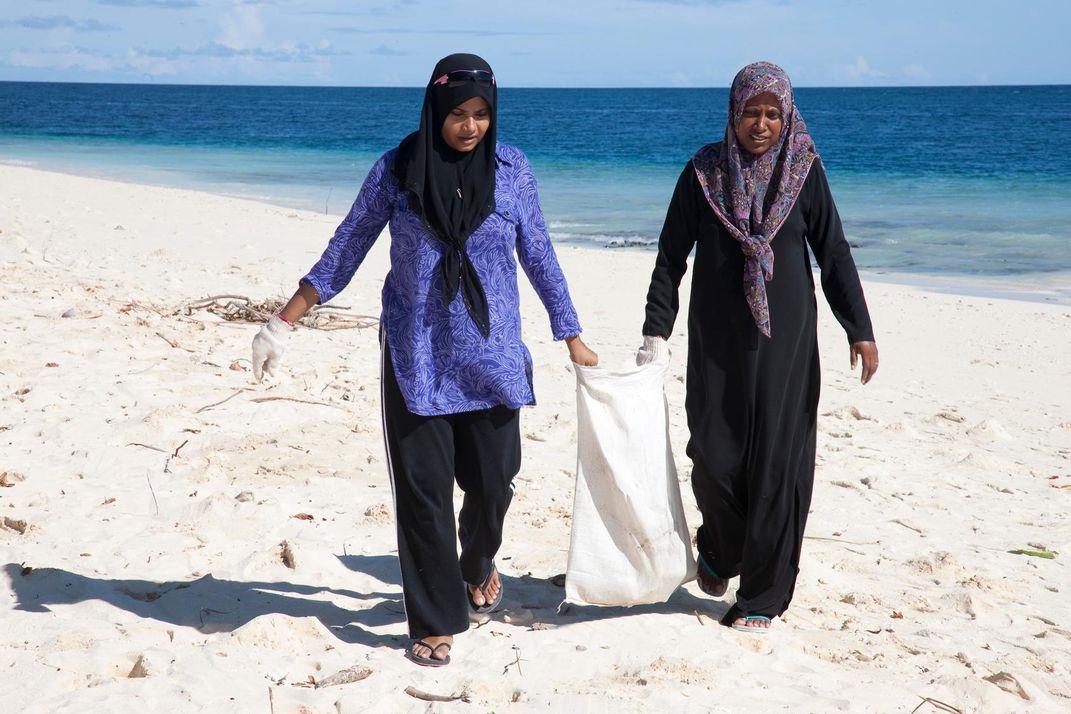Third-Graders in the Maldives Discover the Beauty Beneath Their Seas
Many tourists have experienced the Maldives’ beauty. Most Maldivians haven’t, because they don’t know how to swim
/https://tf-cmsv2-smithsonianmag-media.s3.amazonaws.com/filer/d5/b8/d5b82f52-7b56-49c5-90ff-b9627197b62b/ida_and_twin_sister_irene_participate_in_the_soneva_learn-to-swim_programme.jpg)
The first time Jon Bowermaster went to the Maldives, he was there to report on disaster. Just six weeks before, around Christmas 2004, a tsunami swept through the Indian Ocean, killing 230,000 people from 14 countries. Fortunately for the residents of the Maldives, the coral reefs surrounding the 1,000-mile-long island chain bore the brunt of the impact. Still, 82 Maldivians were killed and 20,000 more displaced as the wave rolled waist-deep over many of the interior islands.
Somewhat ironically, the slow creep of encroaching waves as sea level rises now presents a bigger threat to the Maldives than the tsunami did. The average height of the chain's nearly 1,200 islands is only four feet above sea level, making it the planet's lowest country. Several islands have already been evacuated to escape the rising seas, with more to come as the waves reach higher.
Since his first visit in 2005, writer and filmmaker Jon Bowermaster has returned to the Maldives many times, most recently to film Sink or Swim: Learning the Crawl in the Maldives. The film dually documents a swim class for third graders and their mothers on the island of Eydhafushi, and the effects of climate change already felt by the Maldivian people. Smithsonian.com spoke to Bowermaster to learn more about sea level rise in the island nation. (The following interview has been edited for length.)
Why did you create and film a swim class in the Maldives?
Having spent a decade and longer traveling around the world's coastlines, it was amazing to me how many people we met who had never been properly taught to swim even though they live just a few feet above sea level. And in the Maldives, in my various trips there, I realized this was true there as well. I did a presentation in a school and I asked the kids if they could swim; most of them said no. And I asked them if they had ever seen what was underneath the ocean's surface, and almost to a one they said no.
A lot of the kids are told by their parents that the ocean is like fire. It's something to be scared of, because parents don't want to have to worry about their kids. Their backyard is the ocean, and so as a way to kind of keep them from playing around in the ocean, maybe getting in over their heads, so to speak, many parents teach them to be scared.
So we really wanted to introduce swimming to these young kids. They're in third grade. We wanted to get them in the water. We wanted them to understand the marine ecology that surrounds them. We wanted them to become better guardians or caretakers of the ocean that surrounds them. And the kids loved it. The kids couldn't have been more excited and ready and happy.
Why do you think it's important for them to see beneath the water?
It's pretty simple: If you don't know something, especially if you're scared of it, you certainly won't protect it. And as a result, along the crowded islands where most of the population of the Maldives lives, there are horrific pollution problems, because they throw their trash straight into the ocean. I don't think they understood the connection between marine ecology and its health and the fact that they were throwing garbage into the ocean.
How bad is the ocean trash problem on the Maldivian island of Eydhafushi, where most of the film takes place?
Three thousand people live on one island. I didn't see a public trash bin on the streets. Every island has a big trash dump where they burn stuff. But most of the people take their garbage bins straight from their apartments or their homes and just throw it right on the beach or into the ocean.
I've been around island people a lot. And if you confront them with it, they say, "This is what we've always done." And then you remind them, yeah, but your father and grandfather were throwing away fish bones and coconut husks and you're throwing away Styrofoam and beer bottles. Times have changed. But it demands some government leadership for a simple thing like sanitation. They should have garbage pickup or garbage bins around the island, and recycling. But these are hard things to impress upon a population that's never seen such things.
Tourism is the top industry in the Maldives. So preserving their beaches, or at least keeping them clean, seems pretty important.
Absolutely. At the center of their economy is diving. Certainly tourists come there to swim and to dive and to luxuriate in what are, if taken care of, really beautiful waters. I can't tell you how many high-end resorts there are in the Maldives. Most of them occupy an entire island, a small island, and they're very well maintained. There's nothing littering the beaches and nothing thrown in the sea. But on the nearby community islands where the Maldivian people live, they are often crowded and unswimmable because there's so much stuff in the ocean.
The Maldives also face rising sea level and warming waters. Is climate change a major issue there?
I've spent a lot of time talking to people there, asking if they make the connection between warming climate and rising seas, and to be honest they don't make that link. That's really difficult for them to see or understand. If you try to explain carbon emissions in a place where they barely create carbon emissions and suggest that that's why the seas are rising higher on their little islands—it's just a total disconnect.
But remember that the Maldives had this very forward-thinking president Mohamed Nasheed from 2008 to 2012. He was known as the Island President, and he traveled around the world ringing the bell and trying to get people to pay attention to what he was seeing in his backyard. He famously held a cabinet meeting underwater, with everyone in dive suits, to illustrate the point that pretty soon his nation would be underwater. But that was, even for him, a tough sell with his own population.
In the film, you call the Maldivian people some of the first climate change refugees. How have they already started to adapt to sea-level rise?
There are 15 islands where the populations have already had to move because sea-level rise was impacting their ability to live in the homes that they had built, in part due to erosion. The water is climbing higher and higher and washing away what would have been their beachfront. They've moved to bigger islands, in part because of climate change and in part because they want access to schools and nurses and doctors and things like that.
Nasheed had proposed setting aside tourist dollars, setting a tax basically, and building a fund so that he could buy land in India or Pakistan or Australia, so that people could move if his island nation became unlivable. I talked to some of the older people there about that notion: What if this place becomes unlivable and they have to move to another place? But these are island people; these are water people. To take them and stick them in the middle of the desert in Australia—that's not going to make them happy, that's not what they want. I think their attitude is: We're not going anywhere.
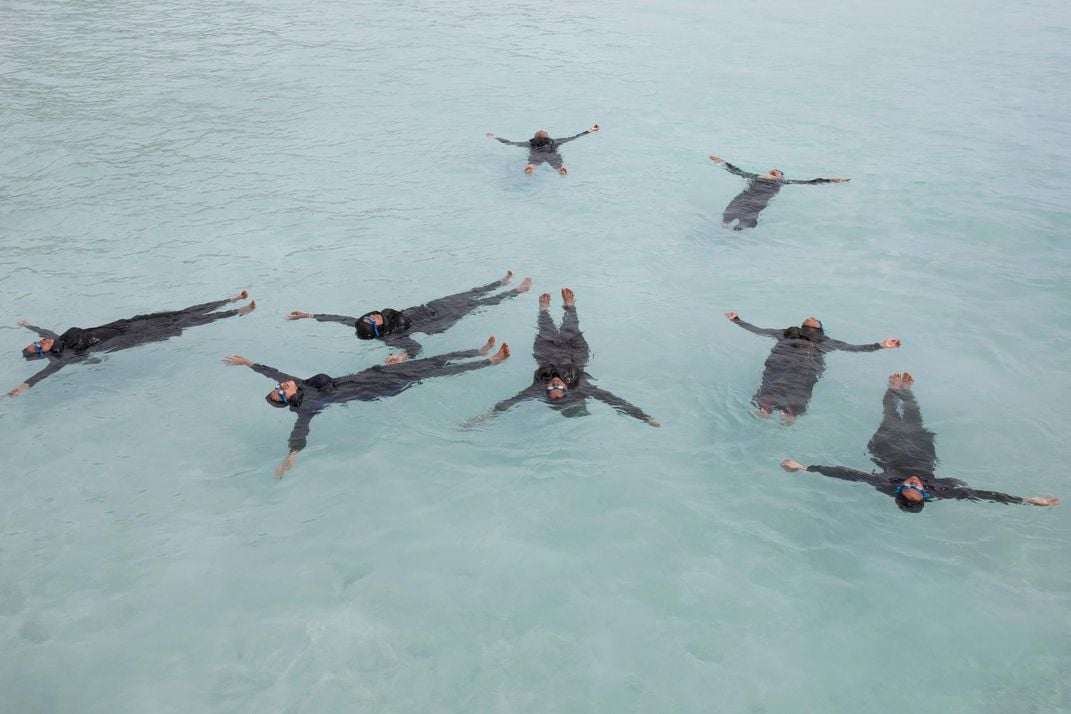
How did students in the swim class react when they saw beneath the surface for the first time?
They had never seen fish before, other than what their parents would bring out of the fishing boats. On the final day of the two-week class, we gave them snorkels and masks and fins and life jackets, and they went out over their heads; they had never been so deep before. And they were thrilled! They saw turtles and big fish and coral. I was going to say that their jaws dropped, but they didn't because they were sucking on snorkels. And this was true for the kids and the mothers. Despite the fact that most of the women were in their 30s, maybe even their 40s, they had never seen under the surface of the ocean. And it's their backyard.
Did they seem more interested in ocean conservation afterwards?
That's a tough one. I tried to talk to them about it. We did a slideshow for the kids at their schools and talked about my experiences and my interest in ocean conservation, and how they needed to be conscious of overfishing and pollution, throwing stuff into the waters. I tried to explain acidification and sea level rise—maybe a few of them got it, but it wasn't an overwhelming rush where they felt like, "Oh, now I get it." But the teachers did. And the teachers can incorporate it into the curriculum.
So you go down there for two weeks and do the swim class and then leave. What would signal to you that the project was a success?
The fact that we had 48 kids come and show up every day. To be honest, I anticipated dropouts. I thought we'd start off with 48 kids and 18 moms and after a week, those numbers would be halved. I just thought they'd be bored. But they were so happy.
We did this for just one school on one little island. That was one year ago in the spring of 2014. So this year, they did it again, adding another class for a couple different islands throughout this one atoll. The first time, we brought three swim instructors who were experienced from the states, and they taught a dozen Maldivians how to teach swimming. The idea is to spread this notion throughout the Maldives. And, you know, I think it is going to work.
